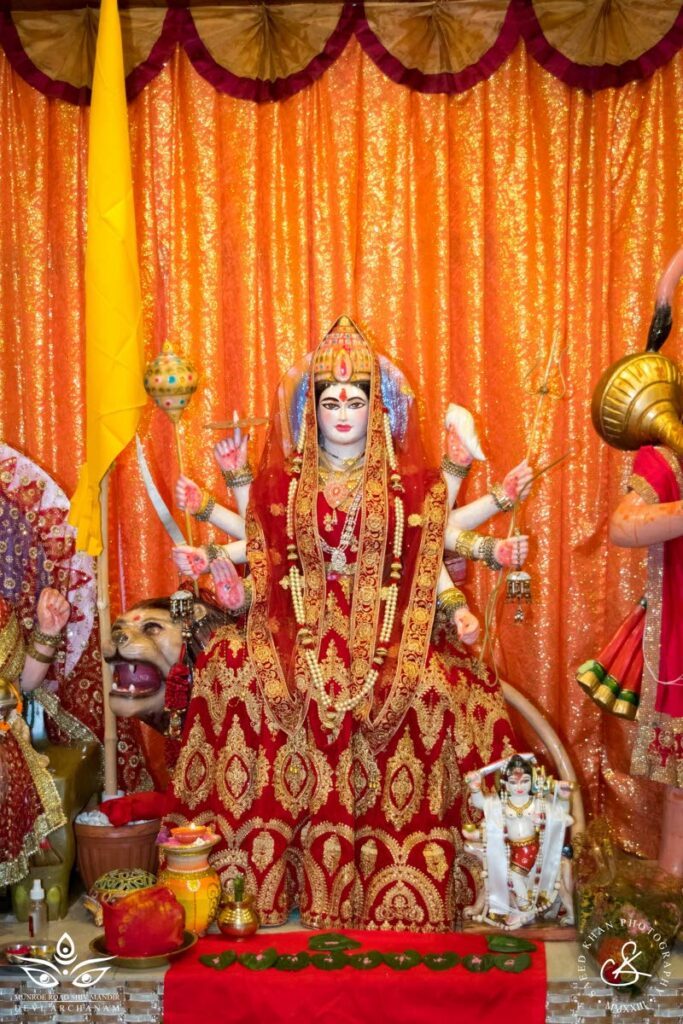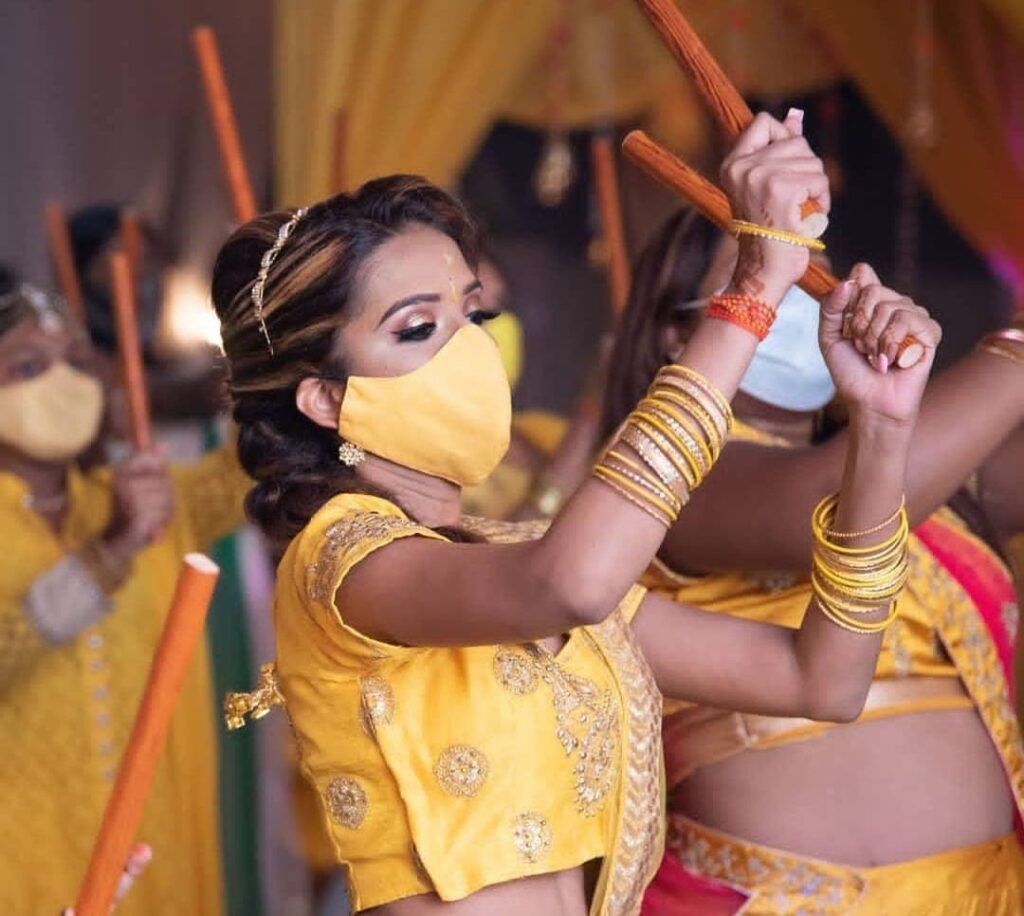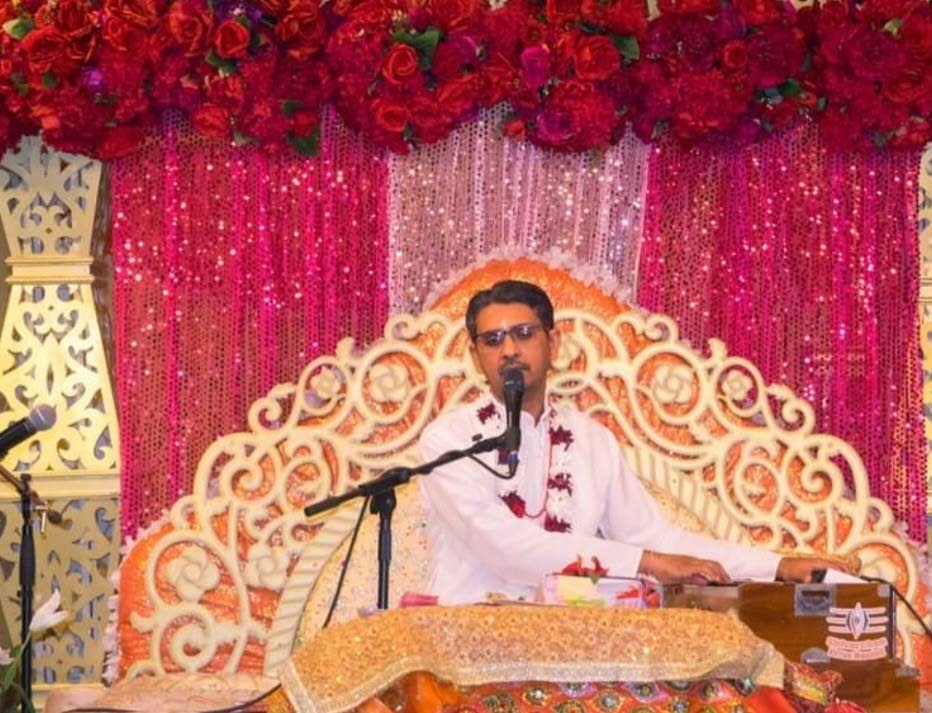Hindus celebrate Navratri

BAVINA SOOKDEO
Navratri will be celebrated from October 15-23. A vibrant Hindu festival, Navratri is a time when devotees come together to celebrate the divine feminine energy embodied by Mother Durga. The word "Navratri" translates to "nine nights," corresponding to the lunar calendar’s nine auspicious nights when devotees fervently worship and honour the goddess.
According to pundit Navin Omadath Maharaj, spiritual leader of the Munroe Road Shiv Mandir, “During this spiritually charged period, the changing seasons render individuals vulnerable to various ailments. Fasting and prayer, integral aspects of Navratri, are believed to purify the body, mind, and spirit, fortifying devotees to confront life's challenges with renewed strength and clarity.”
The pundit further explained that central to Navratri is the veneration of Mother Durga, regarded as the protective mother of the universe. “She is the guardian against malevolent forces, bestowing eternal peace and contentment upon her devotees. Navratri holds a special place in the hearts of worshippers as it marks the celebration of her first manifestation. According to Hindu mythology, Mother Durga emerged as the divine creation of Lords Brahma, Vishnu, and Shiva, with the sole purpose of safeguarding the universe from the clutches of Mahishasur, an evil and arrogant demon who mistakenly believed that no 'mere woman' could challenge him.”
The victory of Mother Durga over this malevolent demon is celebrated fervently throughout Navratri. Devotees engage in spiritual discourses (
Pravachan), sing devotional songs, and participate in the lively
garba dance, symbolising the epic nine-day battle between the goddess and the demon.
Maharaj said, “During this sacred celebration, offerings are made to honour Mother Durga, including arahu flowers, sindoor (vermillion), neem leaves (signifying the goddess’ preference), lapsi, sohari (a special sweet dish made in her honour), and the sacred Durga
dhar offering.

Photo courtesy Paramjyoti School of Dance -
“As per the Devi Mahatyam (Hindu philosophical text), it is recommended that devotees observing worship during this period prepare this sacred blend of nine ingredients every morning and offer it in a
lota (vessel) with water, arahu flowers, and neem leaves. This ritual is accompanied by the lighting of camphor, with devotees wholeheartedly focusing on Mother Durga in prayer, fortified by unwavering faith.”
In situations where one cannot fast and pray for the entire Navratri period, worship is done on the eighth lunar day, known as Durga Ashtami, This day grants devotees all the merits and blessings of the entire festival. Furthermore, a special form of worship is observed on this day, during which nine young girls aged two-ten years are invited and honoured, symbolising the nine distinct forms of the goddess worshipped during Navratri. A young boy under the age of ten, representing Bhairo Baba, is also invited and accorded the same respect, recognising that no worship of Mother Durga is complete without his presence.”
In the Hindu tradition, Mother Durga is often depicted riding her divine vehicle, sometimes as a lion or tiger. “This symbolism emphasises her mastery over immoral emotions such as anger, arrogance, selfishness, greed, jealousy, and the desire to harm others” said Maharaj. “It serves as a profound reminder not to let these negative qualities govern one’s thoughts and actions.”
Adorned resplendently in a red sari and adorned with exquisite jewels, Durga radiates brighter than the moon. The colour red symbolises action, and her red sari underscores the protective divinity she embodies.
Mother Durga is often depicted with eight arms, each bearing a weapon symbolising a unique lesson:
Trishul (Trident) - courage
Hand raised - forgiveness and blessings
Gadaa (Mace) - loyalty and love
Chakra (Discus) - righteousness
Kharga (Sword) - discernment to overcome negativity
Shankh (Conch) - happiness
Dhanush Baan (Bow and Arrow) - character
Kamal (Lotus Flower) - detachment

Each day of Navratri is dedicated to one of the nine forms of Mother Durga:
1. Shailaputri: Born of the mountain king (Himaavan), she holds a trident and a lotus flower, with a bull as her vehicle.
2. Brahmacharini: Representing Mother Parvati in deep meditation, she carries a beaded garland and a sacred water vessel, walking barefoot.
3. Chandraghanta: Adorned with a crescent moon on her forehead, this ten-armed goddess rides a tiger, vanquishing evil forces.
4. Kushmanda: Known as Ashtabhuja, the eight-armed goddess is believed to have created the world with her heavenly smile, bearing treasures and enlightenment.
5. Skandamata: Seated on a lotus, this four-armed goddess carries the lotus flower and a sacred water vessel, with a bell in her other hands, holding her son Kartikeya (Skanda) on her lap.
6. Katyayani: The daughter of Sage Katyayan, she wields a sword while riding a lion, symbolising her ferocious warrior nature.
7. Kaalratri: Embracing her dark complexion, she carries a trident, sword, and noose, symbolising her supreme power.
8. Mahagauri: Adorned with a drum and trident, she symbolises purity, with a buffalo as her vehicle.
9. Siddhi Datri: Seated on a lotus, this four-armed goddess holds a mace, discus, book, and lotus, symbolising perfection and completeness.
Maharaj said, “Navratri is a vibrant, spiritually enriching festival that highlights the power of divine femininity and serves as an opportunity for devotees to rejuvenate their minds, bodies, and souls. Through devotion and celebration, worshippers honour Mother Durga, seek her blessings, and find inspiration in her timeless teachings.”


Comments
"Hindus celebrate Navratri"